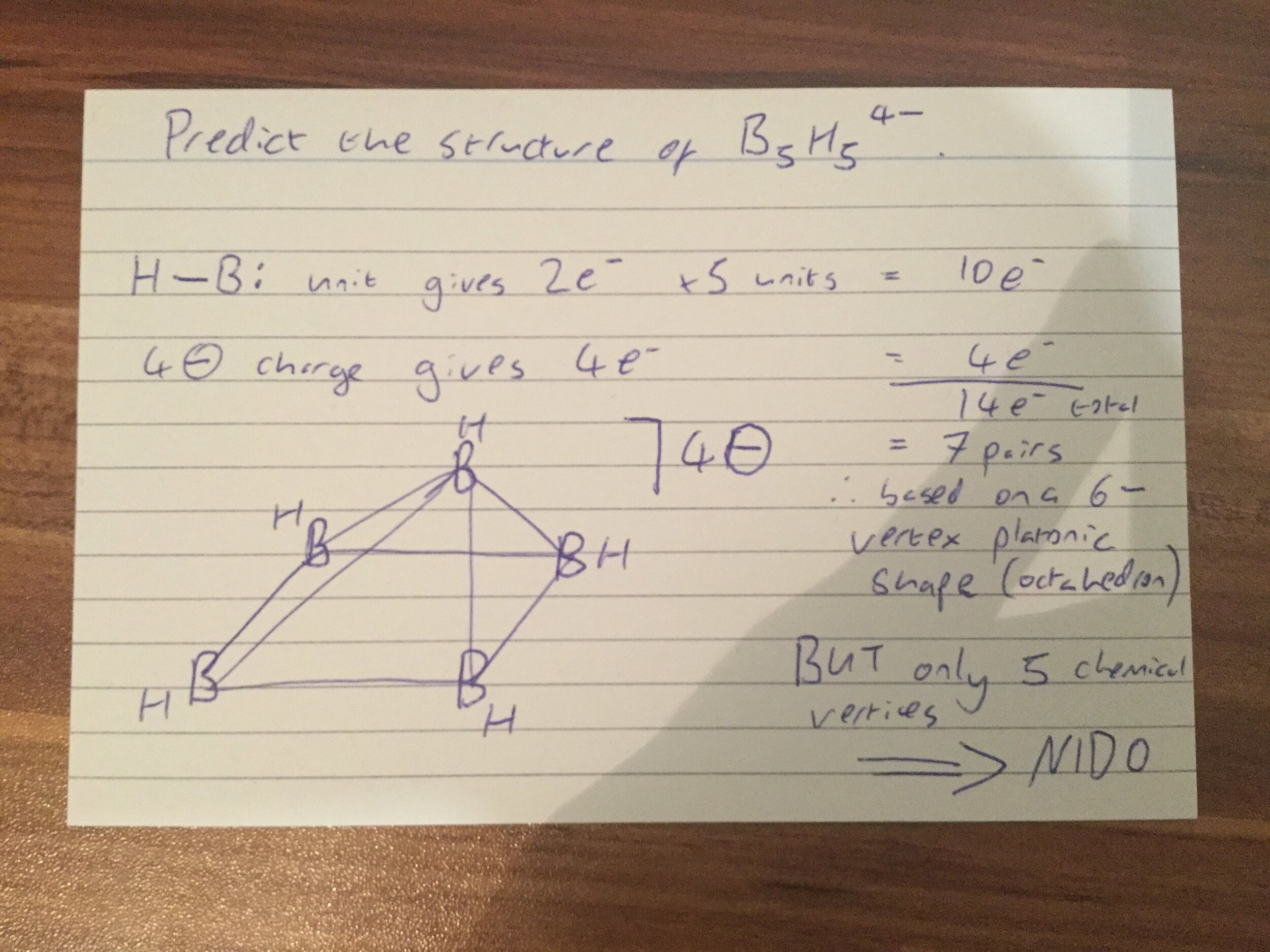Should we cut Wade's Rules?
Wade’s Rules are a beautiful intellectual accomplishment in Chemistry. They allow people to predict the structure of electron-deficient main group clusters. The Wade-Mingos-Davies rules extend the scope of this domain to a broader class of clusters which includes transition metals.
The clusters are lovely, but they also have (some) applications; an interesting one I came across recently was in neutron-capture therapy. Boron is good at absorbing neutrons, and a cluster molecule with lots of boron in it can absorb a lot of neutrons.
I’ve seen Wade’s Rules taught as early as second year and as late as fourth year in UK Chemistry degrees, but they are an entirely normal piece of content. Even in Cambridge’s NatSci course, where Chemistry coverage was at a premium, Wade’s Rules made the cut. They’re beautiful, they’re useful, but I think we should seriously consider removing them from undergraduate syllabuses.
I have three arguments.
A CUL-DE-SAC
The variable placement of the topic is quite telling: this content is the end of the line. Nothing follows on from Wade’s Rules. It doesn’t link up with anything. It doesn’t provide an interesting perspective on some other topic. It is a narrow, specific piece of scientific reasoning. It fits in fourth year because there isn’t a Wade’s Rules II. It fits in second year because there isn’t really any required prior knowledge after A-Level periodicity.
In my view, Wade’s Rules don’t add any Big Picture learning to the syllabus. They add knowledge but not thematic, synoptic knowledge.
PROBLEM SOLVING
Cluster problems make lovely RSC-compliant exam questions. There is a well-established way of asking students to demonstrate their grasp of solving the cluster problem using the appropriate conceptual model (image).
I loved this as a student. It was satisfying to do and it gave me lots of marks. What it didn’t do was educate me more deeply. The RSC’s push for examined problem solving may have served Chemistry well when the foe was rote recall, but I have also seen it curb ambitions for delving into wicked problems.
Wade’s Rules are an algorithm that can be applied within a 20-30 min unseen exam question. They are a neat fit with our assessment strategy. I don’t think they are a neat fit with our hopes for our students: Rome is burning and we’re teaching them how to fiddle.
OPPORTUNITY COST
Alongside the skills development, we should be thinking carefully about content knowledge. Chemistry students don’t have enough time with us to learn everything; the syllabus content is essentially a balloon debate. Perhaps you think differently, but it seems to me that the balloon is pretty full.
There must be pieces of Chemistry sitting outside our syllabuses which are even more important than the structures of dangerously unstable cluster compounds. I have made an argument for Chemistry Education being a part of Chemistry degrees, for example. Or it might be that analytical Chemistry deserves another shot. Perhaps statistics or coding should be covered, or environmental chemistry placed prominently in the curriculum. Perhaps students should be taught how to read a paper, or how to criticise one. Maybe we should be addressing the problems of scaling reactions from grams to tons.
Places are doing all of these things, but Chemistry departments are generally not enthusiastically elbowing out old content to usher them in; Wade’s Rules are beautiful, but they are not earning their place.
